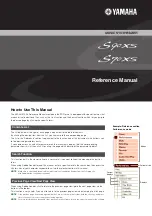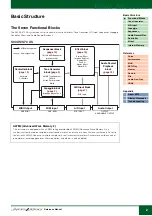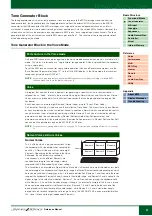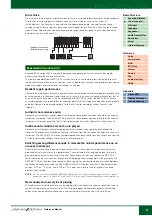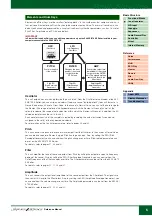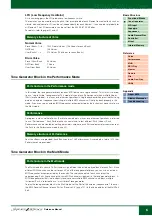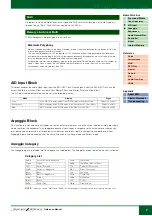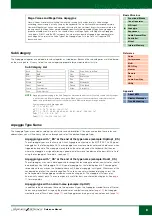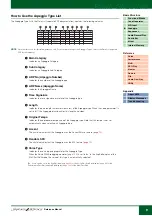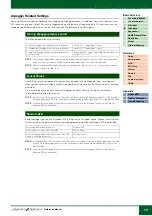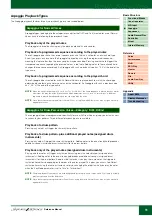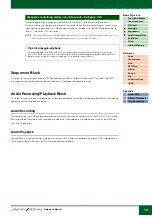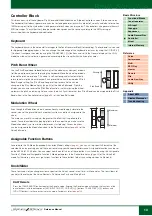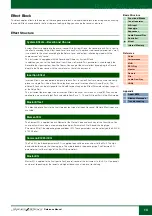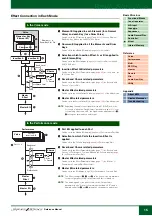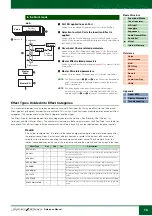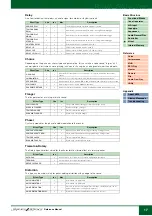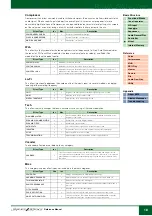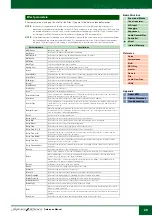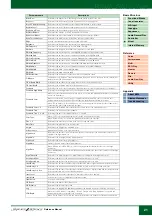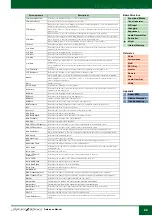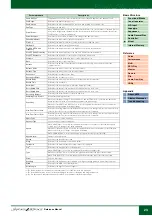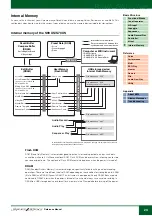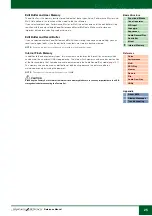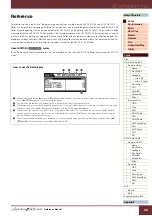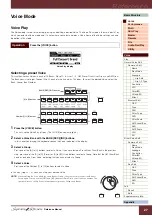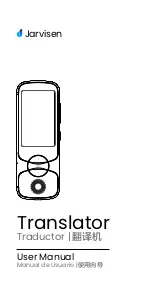
Reference Manual
Basic Structure
12
These arpeggio types are programmed primarily with Control Change and Pitch Bend data.
They are used to change the tone or pitch of the sound, rather than play specific notes. In fact, some
types contain no note data at all. When using a type of this category, set the Key Mode parameter to
“direct,” “thru+direct,” or “sort+direct.”
NOTE
The “Key Mode” can be set in the Arp Edit display (
) of the Voice Edit, Arp Edit display (
) of
the Performance Part Edit and Arp Edit display (
) of the Multi Part Edit.
Sequencer Block
This block lets you play the Standard MIDI file including the 16 parts in the Multi/Sequence Play mode. The MIDI
messages played in the Sequencer block will be transmitted to the tone generator block.
Audio Recording/Playback Block
This block lets you record your keyboard performance as audio data to the USB storage device or internal flash memory
and play back the recorded audio data.
Audio Recording
The sound output from the tone generator block of this instrument and the sound input via the MIC INPUT jack will be
transferred to the Effect block then recorded as audio data. The audio data is recorded and saved as the WAVE file
(44.1kHz/16-bit/stereo).
Audio Playback
You can directly play back the files stored on the internal flash memory or saved on the external USB storage device.
The playback sound will bypass the Effect block before being output.
Arpeggios containing mainly non-note events—Category: Cntr
Tips for Arpeggio playback
It not only provides inspiration and full rhythmic passages over which you can perform, it gives you
quality MIDI data you can use in creating songs, or fully formed backing parts to be used in your live
performances. For details, refer to “Arpeggio” in the printed Owner's Manual.

